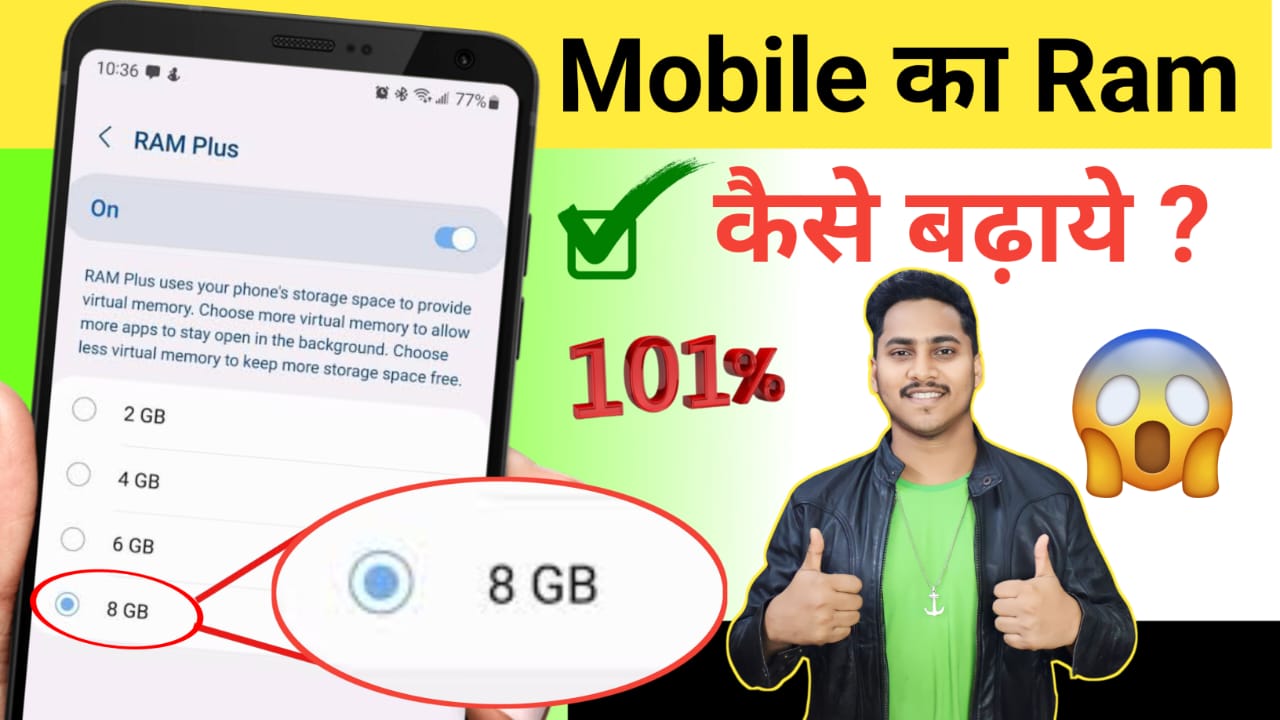
अनुक्रम
How to increase mobile ram
Increasing the RAM (Random Access Memory) of a mobile device is generally not a user-accessible or user-serviceable task. RAM is a physical component of the device’s hardware and is typically soldered onto the device’s mainboard. Unlike storage (such as internal memory or SD cards), which can often be expanded or replaced, RAM cannot be easily upgraded on most mobile devices, especially smartphones and tablets.
However, there are some strategies you can employ to optimize your device’s RAM usage and potentially improve its performance:
1. **Close Unused Apps**: Running multiple apps simultaneously consumes RAM. Closing apps that you’re not actively using can free up memory for other tasks.
2. **Limit Background Processes**: Many apps continue running in the background even when you’re not using them, consuming RAM. Review your device’s settings to limit background processes and app activity.
3. **Clear Cached Data**: Cached data can accumulate over time and consume RAM. Clearing cached data periodically can free up memory. This option is usually available in the device’s settings under “Storage” or “Storage & Memory.”
4. **Use Lightweight Apps**: Some apps are more resource-intensive than others. Consider using lightweight alternatives to resource-heavy apps if you’re experiencing performance issues due to RAM constraints.
5. **Update Software**: Manufacturers often release software updates that include performance improvements and optimizations. Keeping your device’s software up to date can help ensure optimal performance.
6. **Factory Reset**: As a last resort, performing a factory reset can restore your device to its original state and potentially improve performance by clearing out unnecessary files and data. However, be sure to back up your important data before performing a factory reset, as it will erase all data on your device.
7. **Avoid RAM Booster Apps**: There are numerous apps in app stores that claim to boost RAM by closing background apps or performing other optimizations. However, these apps often provide minimal or no benefit and may even degrade performance or compromise security. It’s generally best to avoid them.
Remember that while these strategies can help optimize RAM usage and improve performance to some extent, they won’t increase the physical amount of RAM in your device. If you find that your device consistently struggles with performance due to insufficient RAM, you may need to consider upgrading to a device with more RAM or seeking out a device with better performance specifications.
What is SWAP – No ROOT App
In the context of mobile devices, “swap” typically refers to a technique used by the operating system to temporarily free up physical RAM by moving inactive memory pages to a dedicated partition on the device’s storage, known as swap space or swap partition. This technique is commonly used in desktop and server operating systems like Linux, but it’s less common in mobile operating systems due to differences in memory management and storage access.
On mobile devices, especially those running Android, swap space is not typically utilized by default, and there is generally no built-in mechanism for creating or managing swap partitions without rooting the device. Rooting a device gives users administrative (“root”) access, allowing them to perform actions and modifications that are not typically permitted by the manufacturer or operating system.
However, there are third-party apps and tools available that claim to provide swap functionality without requiring root access. These apps usually create a swap file (rather than a swap partition) on the device’s internal storage and configure the operating system to use it as virtual memory. Keep in mind that using such apps may have implications for device performance, stability, and security, and they may not be as effective or reliable as native swap implementations found in desktop operating systems.
It’s important to note that while swap can help mitigate issues related to insufficient RAM by providing additional virtual memory, it’s not a substitute for physical RAM. Excessive swapping can lead to performance degradation, known as “thrashing,” as the device spends more time moving data between RAM and swap space than executing tasks. Additionally, frequent read/write operations to the storage device can contribute to increased wear and reduced lifespan of the storage medium, especially on devices with limited internal storage.
If you’re considering using swap on your mobile device, I recommend researching thoroughly and proceeding with caution, as improper configuration or use of swap can potentially cause adverse effects on your device’s performance and stability.
How to Download SWAP – No ROOT App
I will definitely recommend this app to those people having low RAM as it’s quite helpful. But the swap file doesn’t works after a few days and you have to recreate it by watching ads. It’s annoying that you have to watch ads every time. But one can have a premiumship privilege to solve this problem. I definitely am quite satisfied with its performance.

